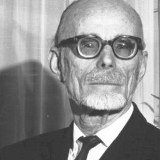Auger effect


When an electron is removed from the atom, leaving a empty place, an electron from a higher energy level may fill the empty place, thereby releasing energy. For light atoms, this energy is most often transferred to another electron which is subsequently ejected. This second electron is called an Auger electron, after the French physicist Pierre Victor Auger (1899 – 1993). Auger electrons have a discrete energy characteristic of the element in which they arise.
In heavy atoms, the energy released is usually converted into characteristic radiation.
History
The Auger emission process was observed in 1922 by the Austrian physicist Elise Meitner (1878 – 1968). The French physicist Pierre Victor Auger independently discovered it in 1923. The effect is therefore sometimes called Auger-Meitner effect.
